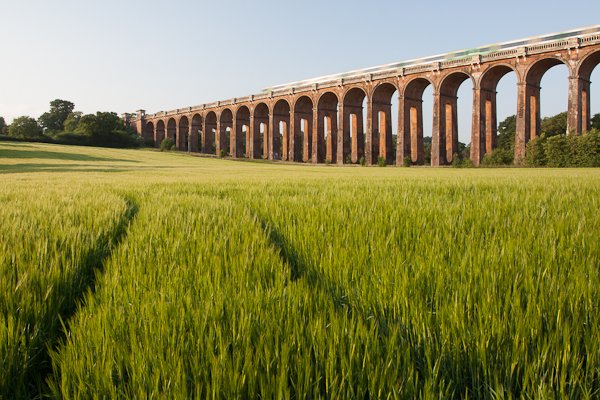
Good composition can make any picture great. In my previous post about composition I talked about the rule of thirds. A foolproof technique to make your picture balanced. It's an easy rule and most commonly used, but there are lot's of other ways to make your photos stand out. Today, let's take a look at leading lines.
Leading Lines
Using leading lines means your photo has distinct lines that lead the viewers attention to the main subject of your photo. Leading lines lead the viewer's eyes across the image. They are like a helping hand, a guide. They usually lead from the edge of a frame inwards, from the bottom upwards, from the foreground to the background. By doing so, they create depth. It becomes easier to get pulled into an image.
Typical leading lines are roads. They always lead somewhere and we can use the vanishing point as our main point of interest.

In this image the tree branches are the main subject. The road and the trees all converge in the center where our eyes can rest for a second and move on the the branches above. It's not a striking image, but it works.

Here we have an image which draws our attention to the horizon where, as you can see, is nothing. We are drawn into the image, but it ultimately doesn't lead to anything interesting. A very boring image without a subject.

This image is much better. We are drawn along the path to the center. From there we can see a tent and a beautiful mountainscape.
Where to find leading lines?
It's up to the photographer to find and use them.
Leading lines can be anything: roads, fences, railings, windows, buildings, poles, streetlights, streets etc. In nature it can be more trickier. Usual lines are rivers, streams, riverbanks, beaches, fallen trees, rocks, tall grass, waves, sand dunes, sun rays etc.
How to use them?
It's up to the photographer to figure this out. It all comes down to finding the right perspective where the lines play into your hand. Here are a few examples.

You can use the point of convergence to highlight your subject. Notice how the street and building all lead to the center.

The lines don't have to be straight.

Using the coast and clouds. Our eyes move from bottom left to center right and back left again.

The plants, rocks and water lead the eyes to the horizon where the sun just went down. From there back to the sky.

Connecting the foreground with the background and making circles in the image. For me my eyes take me from the upper left to the bottom right, from there to the background and straight back to the foreground along the road.

Also remember the rule of thirds. Try placing the subject off-center.
What to Avoid?
The most common mistake would be if you find great leading lines but end up taking a picture where those lines lead your eyes out of the frame before you could view the whole picture.

Here my eyes go along the road and fence to the left and end up getting stuck there. Nothing leads me back into the frame.

Here, both the viaduct and field lead me out of the frame to the left.
Here's a corrected version of the viaduct:

Notice how the point of interest is the small tower at the end of the viaduct. My eyes can clearly rest on that point and go back either along the viaduct or the field.
Also, as mentioned before, although leading lines can make your image much more interesting, it won't substitute a clear subject. Leading lines are a tool to enhance your subject.
There are as many ways to introduce leading lines into our images as our imagination and creativity allows us. So keep a look out for lines when you find yourself taking photographs. They might just make your image from good to great.
Sources:
https://expertphotography.com/how-to-use-leading-lines-to-improve-your-composition/
https://nikonites.com/tutorials/18482-composition-3-leading-lines.html#axzz4jPe0np6p
http://www.deviantart.com/

